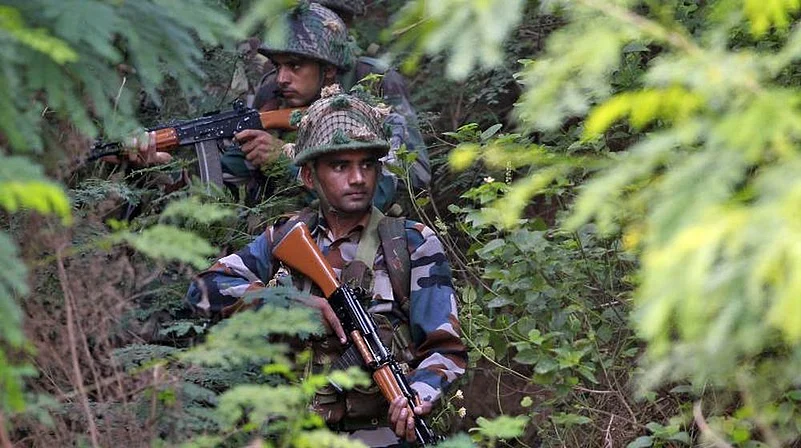For decades, India has borne the brunt of Pakistan’s state-sponsored terrorism. In the past, terrorists operated with impunity, launching attacks in Indian territory at will. Evidence gathered by India’s security agencies would be routinely dismissed by Islamabad, which would deflect blame by portraying itself as a victim of terror. Even after being placed on the Financial Action Task Force’s (FATF) ‘grey list’ for financing terrorism, Pakistan’s support for such activities continued.
But the attack on April 22 in Pahalgam, Kashmir in which Pakistan-backed terrorists murdered 26 civilians, reportedly asking for their religion before opening fire, has marked a turning point.
Any concession to Pakistan after this would not only be an injustice to the victims but also embolden future attacks.
India’s strategy has been directed at building internal pressure in Pakistan and thus forcing its own people to demand an end to terrorism. Steps like suspending the Indus Waters Treaty, halting bilateral trade, revoking visas for Pakistani nationals and finally, launching Operation Sindoor to target terror bases within Pakistan send a clear message: cripple the terror infrastructure both economically and militarily.
Isolated on All Sides
Pakistan’s complicity in terrorism has eroded any remaining international goodwill. While in earlier conflicts—particularly the 1965 and 1971 wars—the US and other Western powers tacitly supported Pakistan, today the geopolitical landscape is markedly different. In 1971, the US had used its veto power in the UN Security Council to block resolutions against Pakistan. The US and the UK had also extended military and financial aid. Despite that, Pakistan suffered defeats in both wars.
Now, in the wake of the May 7, 2025 air strikes, in which India destroyed nine terror camps and a day later, precision-struck an air defence system near Lahore, global reactions have been muted and have for the most part called for a de-escalation of the conflict. No major power has stood up for Pakistan so far.
Notably, the current context is far removed from that of the 1965 or even the 1999 Kargil war. For instance, India’s military victories in 1965, 1971 and at Kargil were demonstrations of its battlefield superiority. And while Pakistan managed to secure foreign support, allowing it to prolong conflicts, today, it finds itself without serious allies or the financial wherewithal to sustain hostilities.
China remains Pakistan’s only major ally, but its current preoccupation with a tariff war against the US limits its appetite for direct confrontation. Should India extend its trade embargo to China, Beijing could face significant economic repercussions. Turkey has voiced support for Pakistan, but its limited economic capacity throws into doubt the possibility of continued and assured support. The reality is stark: Pakistan is diplomatically isolated and in no condition to sustain a full-scale conflict with India.
Economic Pressures
In contrast, India’s position has grown stronger while Pakistan’s economic woes have only deepened. While India’s economy has surged forward over the last decade, Pakistan has stagnated, crippled by debt, inflation and an unstable currency. The Pakistani rupee has collapsed from 94.21 per US dollar in 2013 to 281 today. The country’s credit rating has sunk to CCC+ and it relies on loans to avoid defaulting on existing ones.
The country’s capacity to fund a war is almost non-existent. It is no secret that it can’t afford new weapons and its ability to import food and essential supplies is undermined by depleted foreign exchange reserves. In contrast, India’s defence spending reached $86.1bn in 2024, dwarfing Pakistan’s $10.2bn. Even a doubling of Pakistan’s defence budget would not bridge this gap.
Economic pressure has thus become a crucial element of India’s strategy. Pakistan is already facing acute water shortages. With the Indus Waters Treaty suspended, the curtailing of water flows from India affects agriculture, drinking water and hydroelectric generation. An estimated 93% of the water from the treaty is used for irrigation, which is vital for crops like wheat, rice, sugarcane and cotton. A water crisis will deepen food insecurity in Pakistan, particularly in major urban centres such as Lahore, Karachi and Multan.
The larger economic picture is equally grim. Pakistan’s per capita income has inched up only marginally—from $1,266 in 2014 to $1,365 in 2023—while India’s has risen from $1,553 to $2,480 in the same period. The currency gap between the two nations has widened dramatically: one Indian rupee now equals 3.3 Pakistani rupees, up from 1.71 in 2013.
Waning Support
Public sentiment within Pakistan reflects this downturn. People are disillusioned with both their government and the militant groups that operate with impunity. In contrast, India’s democratic model, economic strength and leadership are viewed with admiration. With public morale low and terrorist attacks further degrading domestic stability, Pakistan’s civilian population is increasingly disinterested in conflict.
This lack of public will has already been visible. Following past surgical and air strikes by India, Pakistan did not escalate hostilities. It simply could not. Today, its economic and political weaknesses are even more evident. The international community, too, shows no interest in shielding Pakistan from the consequences of its actions.
India has struck decisively before and must continue to do so. This is the moment to dismantle the infrastructure of terrorism, not just to avenge atrocities, but to ensure they are never repeated.
The writer is former professor, PGDAV College, University of Delhi
















